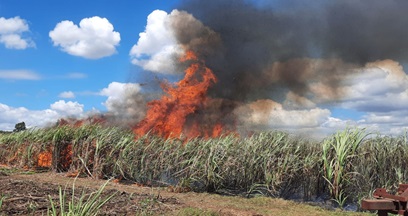
Burning sugar cane negatively impacts the environment, and reduces sugar content and quality, says Sugar Research Institute of Fiji CEO Dr Vinesh Kumar.
He said it necessitated urgent attention and concerted efforts to control it.
“The traditional method of burning sugarcane fields pre-harvesting has long been associated with several detrimental effects,” Dr Kumar said.
“Recent observations of the data from three mills have shown that apart from other variations, there is a strong correlation between the percentage pure obtainable cane sugar (POCS) and duration of burnt cane supplied to mills.
“As the burnt cane is delayed in supply to the mills, POCS drops thus reduction in quality and quantity of sugar.
“Burning also results in poor air quality and increased greenhouse gas emissions.
“Additionally, it contributes to soil erosion and poses occupational hazards for field workers.
“The negative impacts of cane burning are undeniable, including the loss of vital organic matter from the soil, reduced ratoon crop yields, and threats to biodiversity, raising serious concerns about the sustainability of such practices.”
Dr Kumar said the industry needs to transition to green cane harvesting because it offers an abundance of benefits, including improved sugar quality and quantity, better air quality, reduced greenhouse gas emissions, enhanced soil health, and the preservation of biodiversity, making it a highly sustainable practice.
In the 2022 cane harvesting season, the Fiji Sugar Corporation noted that 54.2% of cane received at its Lautoka mill and 30% at Labasa was burnt.